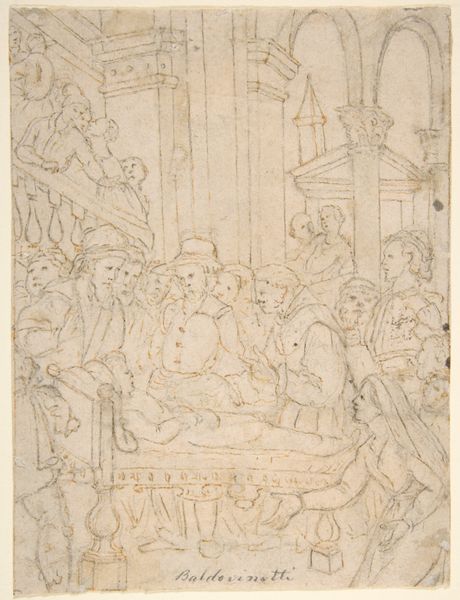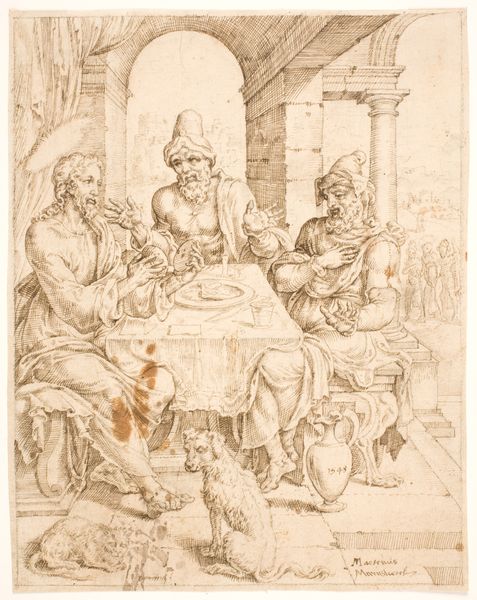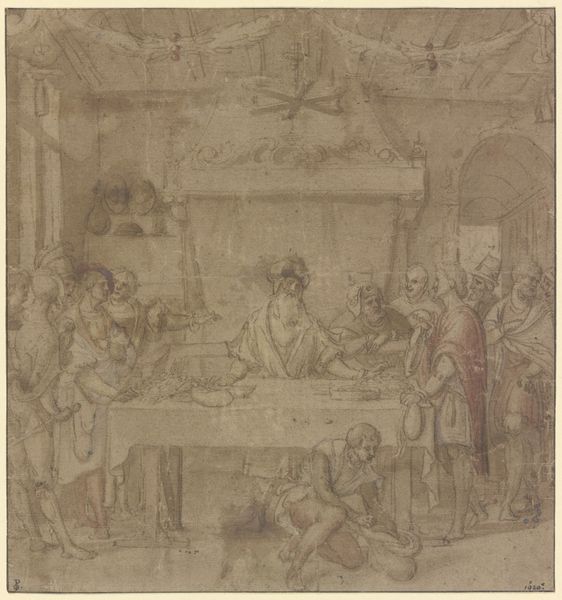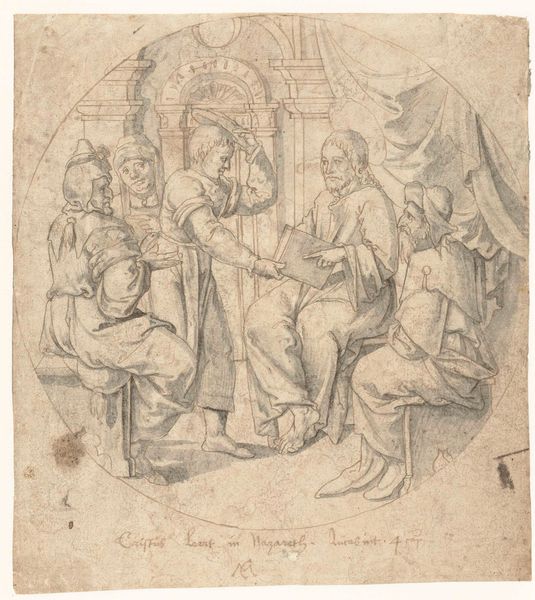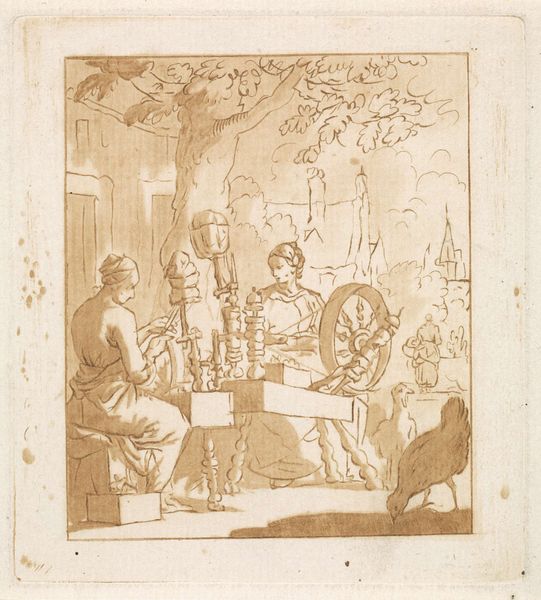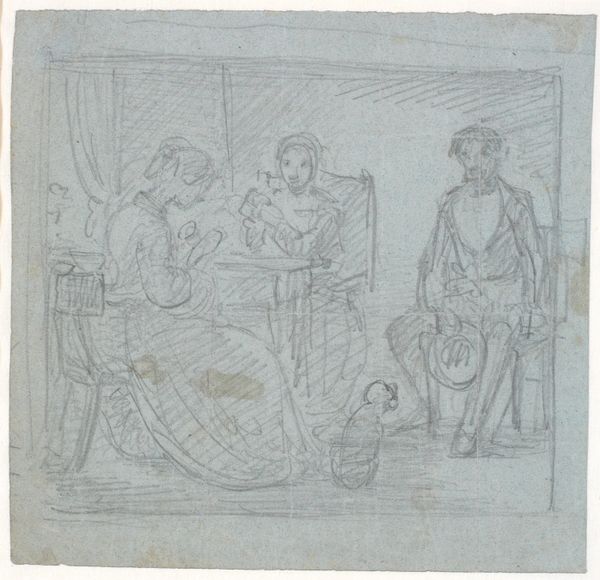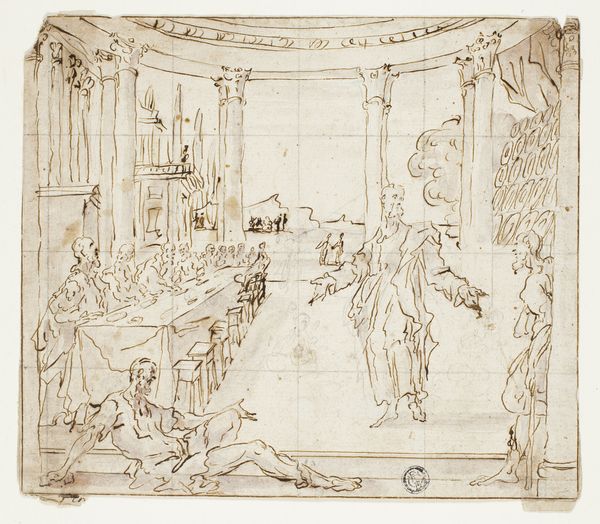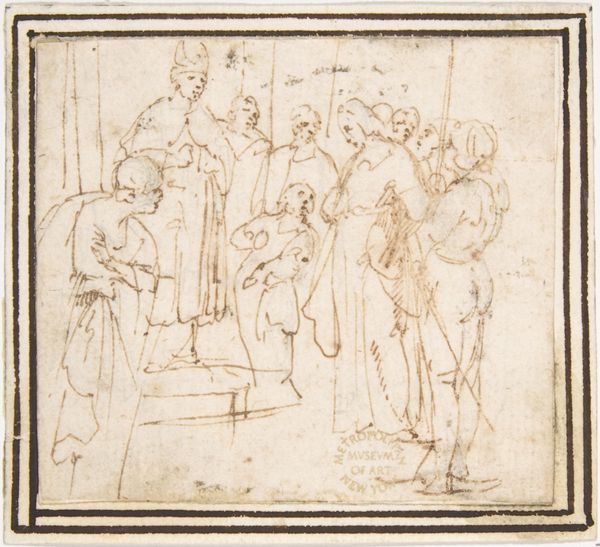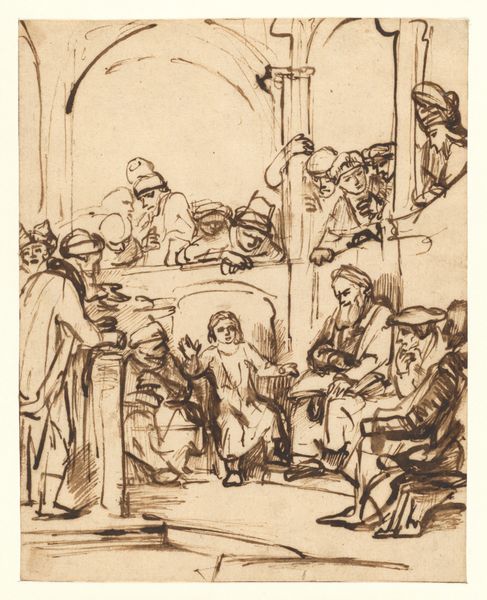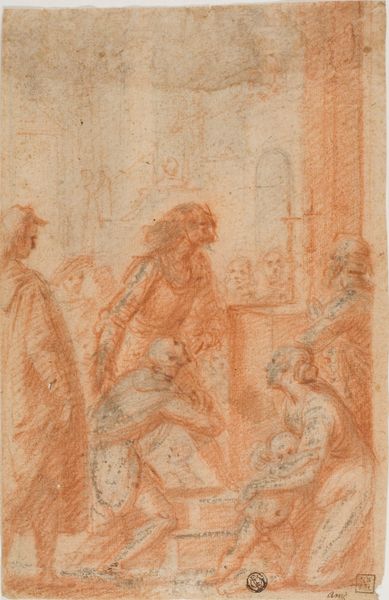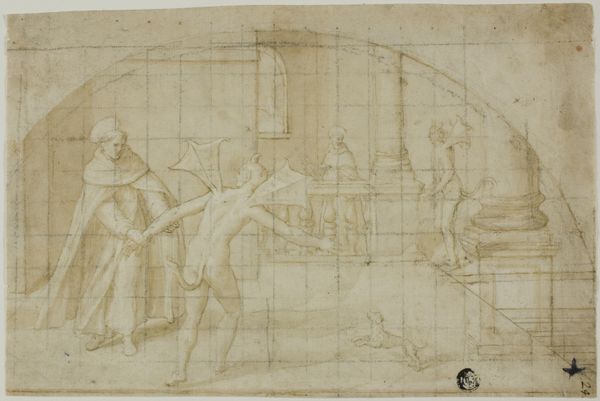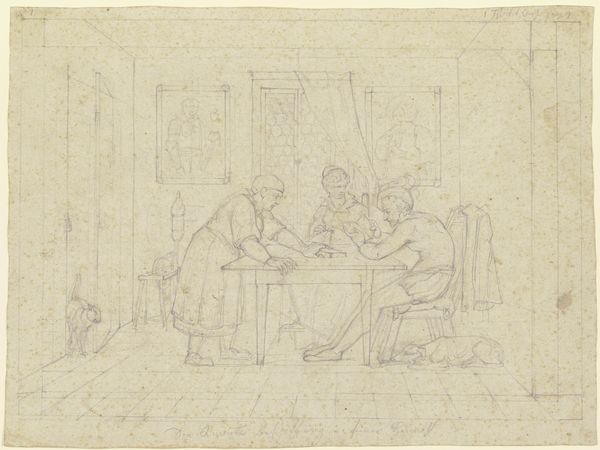
Kongefamilien ved et taffel på Hirschholm Slot 29. september 1771 1771
0:00
0:00
Dimensions: 211 mm (height) x 149 mm (width) (bladmaal)
Editor: I find the casual nature of this pen drawing intriguing. It looks like it was done swiftly, with incredible confidence and not overly concerned with precision. The figures seem to almost float on the paper, unmoored. Curator: This piece, made by Peter Cramer in 1771, is titled "The Royal Family at Table in Hirschholm Palace, September 29, 1771". Editor: "Casual" might be an understatement; this is the royal family, yet it feels so… off-the-cuff. I'm trying to see beyond the Rococo style and its typical aesthetic conventions and notice, particularly, that the lack of adornment gives it a peculiar raw energy. It feels almost as if we are eavesdropping on an unscripted, everyday moment rather than observing a meticulously staged royal portrait. I find that powerful and a bit unsettling. What's your read on this "genre painting," in light of its subject matter? Curator: It is undeniably rough. Yet there is a lively freedom to that roughness. To see the King and Queen, normally icons of such formal control, rendered with such spontaneous energy is incredibly exciting. I imagine the artist working at a fever pitch to capture this tableau as he observed it. Look at the confidence with which he renders the figure of the serving boy, barely outlined. It gives him, and us, such immediacy. This quick capturing grants it a rare intimacy – perhaps as close as a member of the court was allowed to get, that is. The unfinished feel of it creates this beautiful illusion, almost like a dream that evaporated upon waking. The Rococo elements feel intentionally softened. It asks you to wonder what really happens behind closed doors in these grand palaces, stripping away layers of the typical grandiosity and allowing us into their world. Editor: A dream indeed. Maybe even a Freudian slip! It’s intriguing how the sketchy lines blur the lines between public facade and private reality. And by choosing this seemingly informal medium – pen and drawing, Cramer strips away some of that "divine right" veneer of royalty and presents them in, dare I say, a humanized manner. The question is, what does this “humanization” achieve, and for whom? Curator: Perhaps an early form of… democratization? Editor: Perhaps. In any case, this image feels radically modern in its intimacy and incompleteness. Curator: I think I am convinced of this modern edge, now, through your lens! Thanks for that new way of seeing it!
Comments
No comments
Be the first to comment and join the conversation on the ultimate creative platform.

